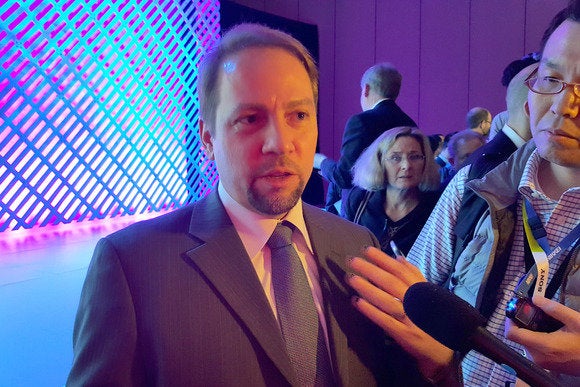I have a personal stake in this story.
James Kuffner, the head of Google’s robotics division and one of the original team of ten who started its self-driving car work, has left the company for a job at Toyota’s $1 billion research institute in Silicon Valley.
His departure will come as a blow to the search and advertising giant, which has been plowing forward with a number of robotics projects including the self-driving car, which it hopes to offer for public use some time next year.
“It’s becoming clear that in the next phase of machine learning, access to lots of data to find and fix corner cases and to make a robust system is going to be very important, and I think Toyota is very well positioned to do that with its resources and its data,” Kuffner said in an interview at the CES expo in Las Vegas on Tuesday.
[…]
Toyota’s billion-dollar investment in the center was only announced in November, but the institute has already opened for business in two locations: one at the Stanford Research Park in Palo Alto and one in Kendall Square in Cambridge. They were chosen for their proximity to Stanford University and the Massachusetts Institute of Technology.
TRI’s mission is to take fundamental robotics research into products that can benefit all of society. One of the loftier visions is the development of cars that are incapable of crashing due to their complex AI systems, but the institute will also look at home-help robotics for the elderly and other projects.
[…]
To be sure, the goal of a completely self-driving car that handles any situation and cannot crash is some distance away, but Kuffner said a lot will be possible in the next few years.
“We’re actually closer than people think to having self-driving cars on the road,” he said. “It is an evolution. There is a continuous spectrum between full manual control and full autonomous control, and there’s going to be phased deployments.”
He cited some of the current technologies making their way into cars, such as lane assist and adaptive cruise control.
“These safety features are creeping into lots of cars you can buy today, and the pace is increasing, so I think people will be happily surprised in the next five years at how our vehicles have changed.”
James is my cousin, and I found this story on his Facebook page in January. Needless to say, we’re all quite proud of him. I talked with him about his work on driverless cars a couple of years ago when we were in Portland visiting family, actually did an interview with him that I hoped to publish here, but we never got clearance from Google on it. I remember him telling me that when they started out, their intent was to make the autonomous cars follow all of the rules of the road, but quickly learned that this was not only impractical but dangerous. For example, in highway merge situations, sometimes you have to exceed the speed limit to ensure safety. They aimed instead at making the car behave more like a median driver, by which I mean one whose behavior is in the middle of the range of how drivers behave. It’s a challenging question to model behavior like this, and my guess is that’s one reason why we are seeing this phased implementation of the technology.
Anyway. The driverless car business continues to attract a lot of money and a lot of discussion about what the future of driving will look like. And a member of my family is playing a leading part in that. I think that’s pretty cool.

